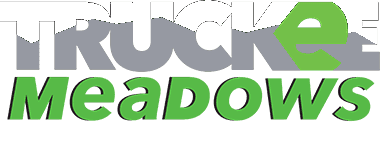Voles, also referred to as meadow mice or field mice are compact rodents with stocky bodies, short legs and short tails. Their eyes are small and their ears partially hidden. They have dense underfur and its covered with thicker, longer guard hairs. There are 23 species of voles in the United States. These rodents are usually brown or gray though other color variations exist. We have two species here in Nevada which is the Long-tailed Vole and the Montane (or Mountain) Vole.
The Long-tailed vole can be distinguished from other species by its tail, which comprises 30% or more of its total length of 6 to 8 ½ inches. The long-tailed vole has gray to dark brown fur with many black tipped hairs. This vole’s underparts are gray mixed with some white or yellow. Its tail is indistinctly to sharply bicolored. The long-tailed vole is found in a wide variety of habitats. This vole is seen in sagebrush grasslands, forests, mountain meadows and stream banks.
The Montane Vole is 5 ½ to 8 ½ inches in total length. Its fur is brown, washed with gray or yellow, and mixed with some black-tipped hairs. Its feet are usually silver-gray, and its body underparts are whitish. The tail is bicolored. This vole is found primarily in mountainous regions. You will see this vole in alpine meadows, dry grasslands, and sagebrush grasslands. This vole avoids forests. This vole is generally in drier habitats.
Voles eat a variety of plants. But mainly grasses and forbs (herbaceous flowering plants). During the summer and fall the vole will store seeds, tubers, bulbs and rhizomes. They eat bark at times, primarily in the fall and winter. Occasional food items include snails, insects and animal remains.
Voles are active day and night, all year. They do not hibernate. Their lifespans are short, ranging from 2 to 16 months. Their reproduction rate is high, breeding throughout the year but most commonly during spring and summer.
Voles can cause extensive damage, most of the damage occurs in the winter when they move through their grass runways under the protection of snow. When spring comes and the snow melts, unfortunately, that is when homeowners see the damage.
Voles pose no major health problems since there is infrequent contact with humans. However, they can harbor disease organisms, such as plague and tularemia. Voles should never be handled, and if it is necessary to handle a vole, you should wear the appropriate protective clothing such as leather gloves.
If you, your family member, friend or neighbor are experiencing lawn damage that you believe is being caused by voles or moles, please give us a call here at Truckee Meadows Pest Control (775) 535-5788.


